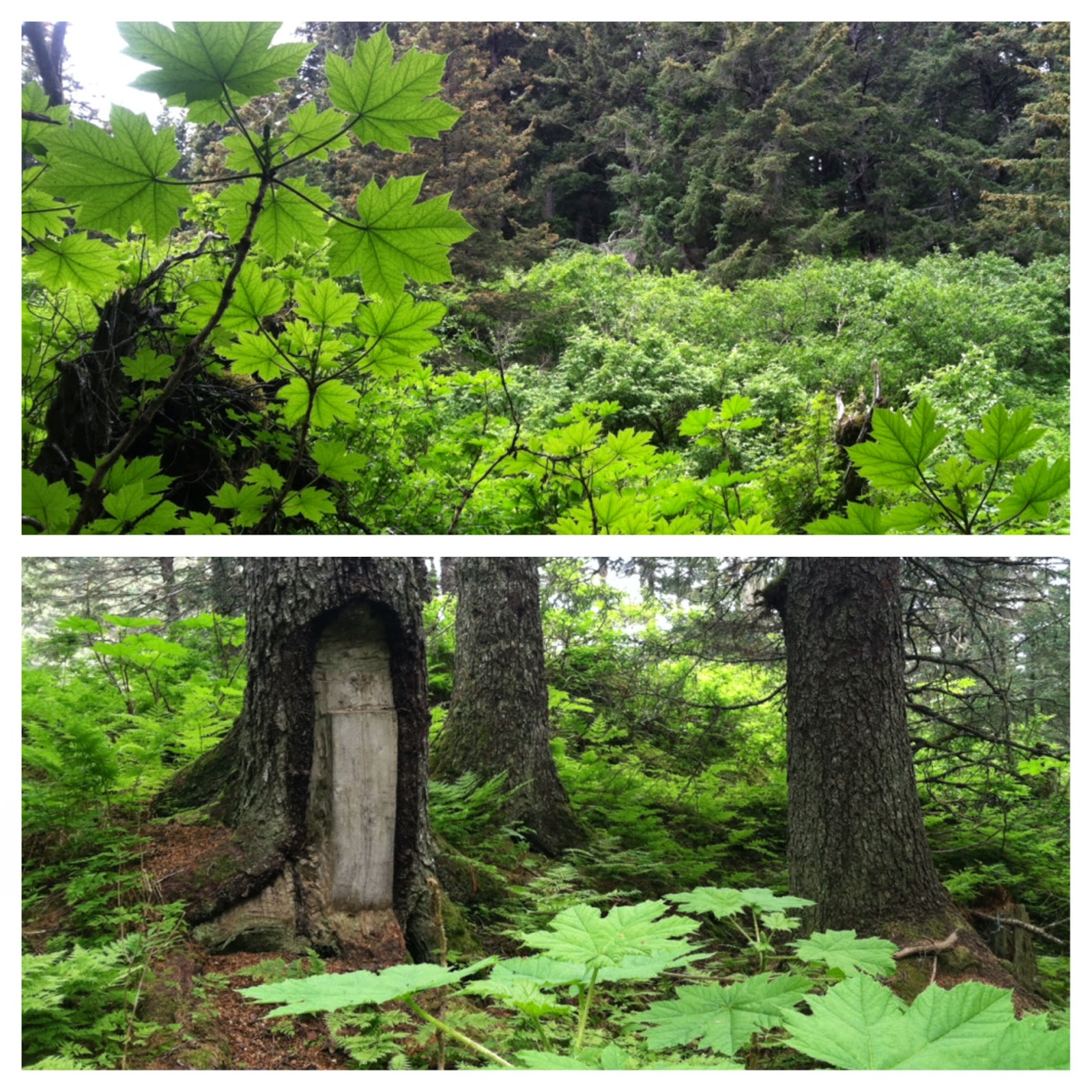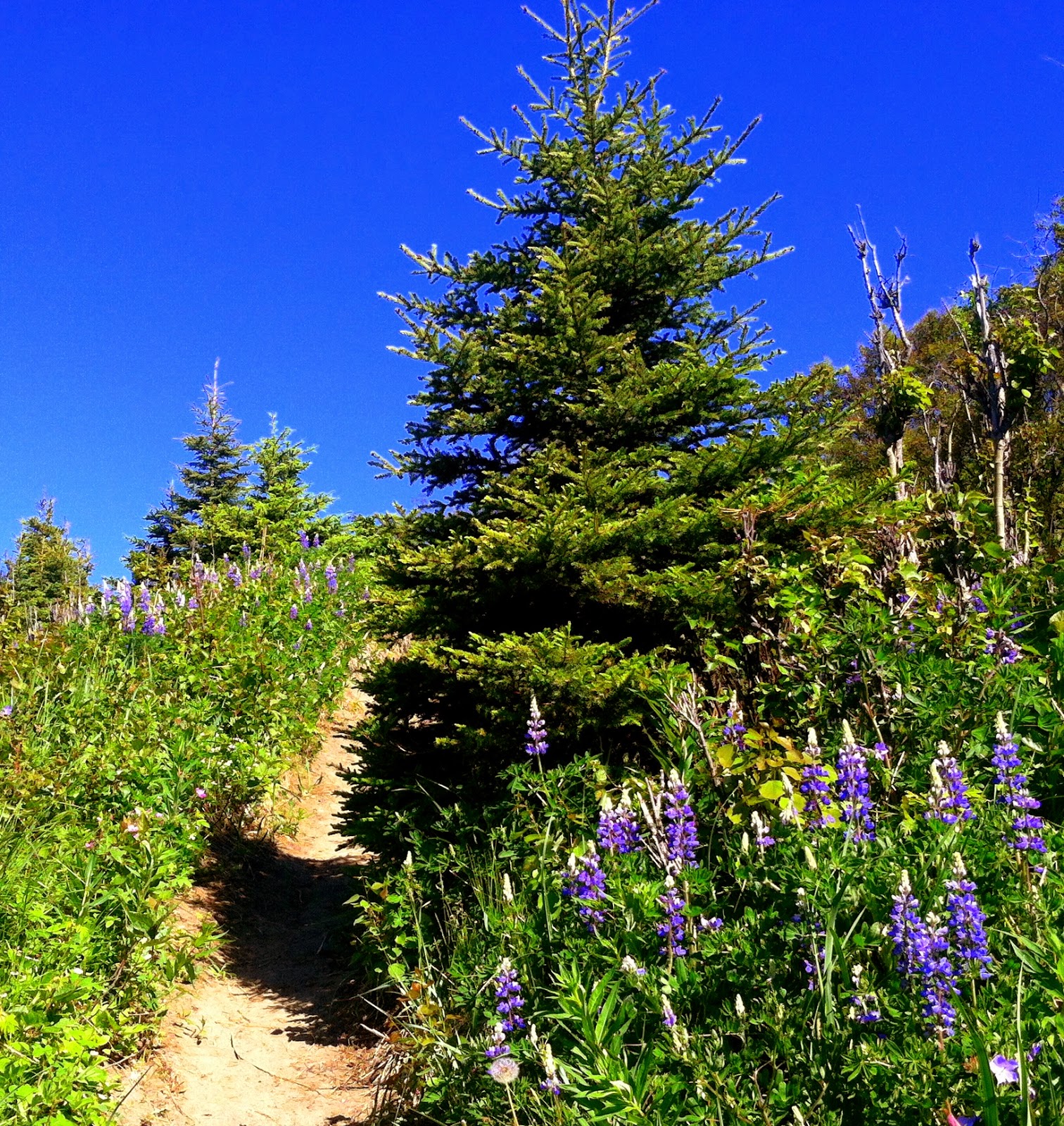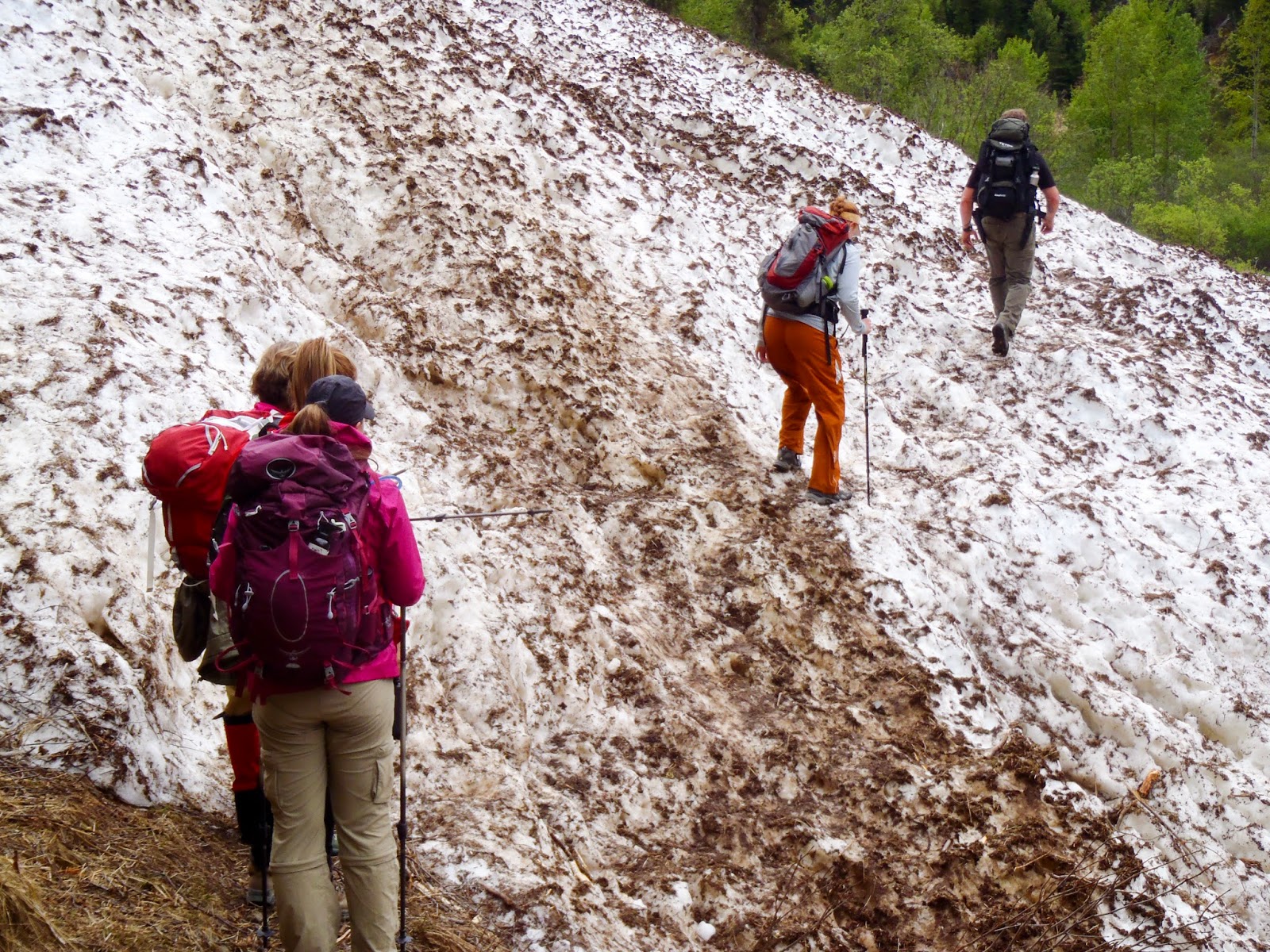Those are our tents near the trees on the left! It's best to stay in the open, in places with lots of visibility. That's one reason we (and all of the caribou) did most of our hiking on the riverbed--so that we could walk without a care.. In the forest, not only is the going much slower due to brush and mossy ground, but our alert (or paranoia) level went from zero to sixty, expecting to see a grizzly bear around every tree.
After leaving our first campsite (above), we had two beautiful days of hiking and camping. We forded the river several more times, but started taking our boots off and crossing barefoot (you're not supposed to do this, but dry boots were worth the risk of foot injury). We saw bear, wolf, and fox tracks. We cooked and ate 100 yards away from our tent and stored our food in bear-proof containers another 100 yards away..(required and distributed by the backcountry office). Everything smelly goes in there-- food, trash, toiletries. I couldn't peacefully sleep at night if even a tube of chapstick was left in my bag/tent.
On the third day, Angela and I didn't move camp but opted for a day hike up this mountain:
The ground in the forest and all of the tan color that you see is tundra-- moss and grasses that sink under foot and cover rocks, logs, swampy areas. Angela called it "like doing a stair-stepper on foam." The gray that you see is what I would call "thicket:" dense 8-foot tall shrubs with branches poking out from head to toe. I had to crawl and wrestle my way through.
Looking back down on the river and forest from whence we came! Around this time, Angela turned back with a sore foot and I continued up alone... It got very steep very quickly, so steep that I grabbed the tundra in front of my face and climbed it like a ladder... Once through the tundra and thicket, I emerged on a rocky outcrop, about 500 feet from the summit. I stopped to contemplate my progress, eat, and drink. I could see a white dall sheep high above me. Otherwise, I felt very alone and high up-- the wind was blowing and our tents were tiny specks below.
As I rested, in my peripheral vision, I saw movement on the snow-
filled couloir (you can see it in the picture above). Crossing the snow, headed my way, was a mother Grizzly with two cubs. I wasn't alone after all! The instinctual "holy shit" adrenaline response ensued. Very briefly, I watched the two cubs scramble across the snow (very cute), but sadly didn't feel safe enough to observe any longer; the mom had not seen me (about 200 yards away) so I gave up my goal of the summit and ran/stumbled down the tundra, crashed through the thicket, breaking branches, tearing my pants, getting sticks stuck everywhere. I started singing to alert any lower-elevation bears that I was charging outta there and the hurry didn't subside until I was back in the safe, wide-open riverbed.
Even as I was retreating, I was psyched, as well as thankful for divine intervention: had I not seen them at that moment and kept ascending, our paths would've intersected at much closer range and who knows what would've happened! A couple days later, we saw another family of bears on the road, from the bus. This was also cool, but viewing them from the bus didn't deliver the thrill of seeing them come toward me on a lonely rocky peak, where their impressiveness was really
felt.
Mother Grizzly with two year-old cubs, as seen from the bus!
"Those
who have packed far up into grizzly country know that the presence of
even one grizzly on the land elevates the mountains, deepens the
canyons, chills the winds, brightens the stars, darkens the forest, and
quickens the pulse of all who enter it."
- John Murray












































